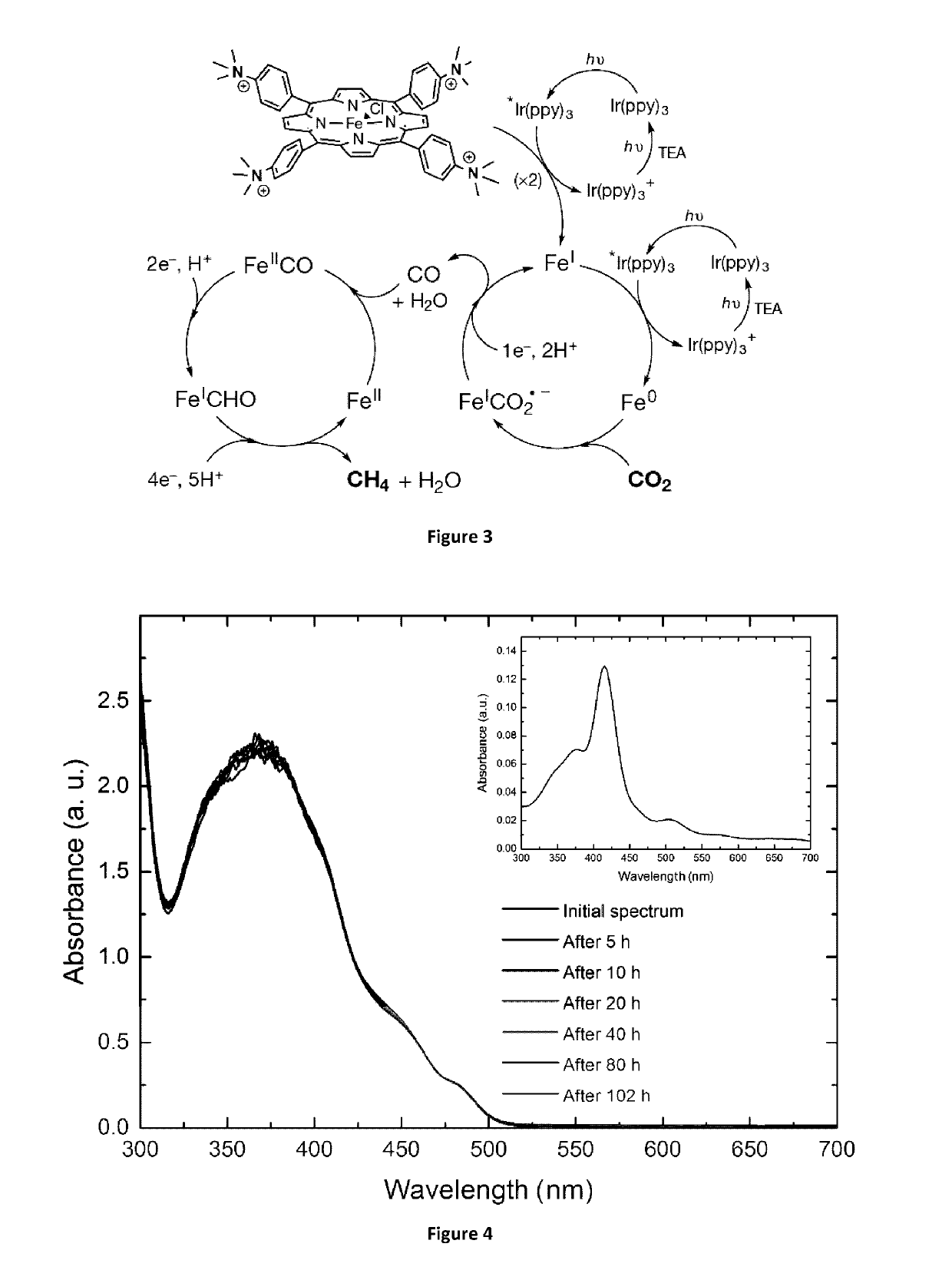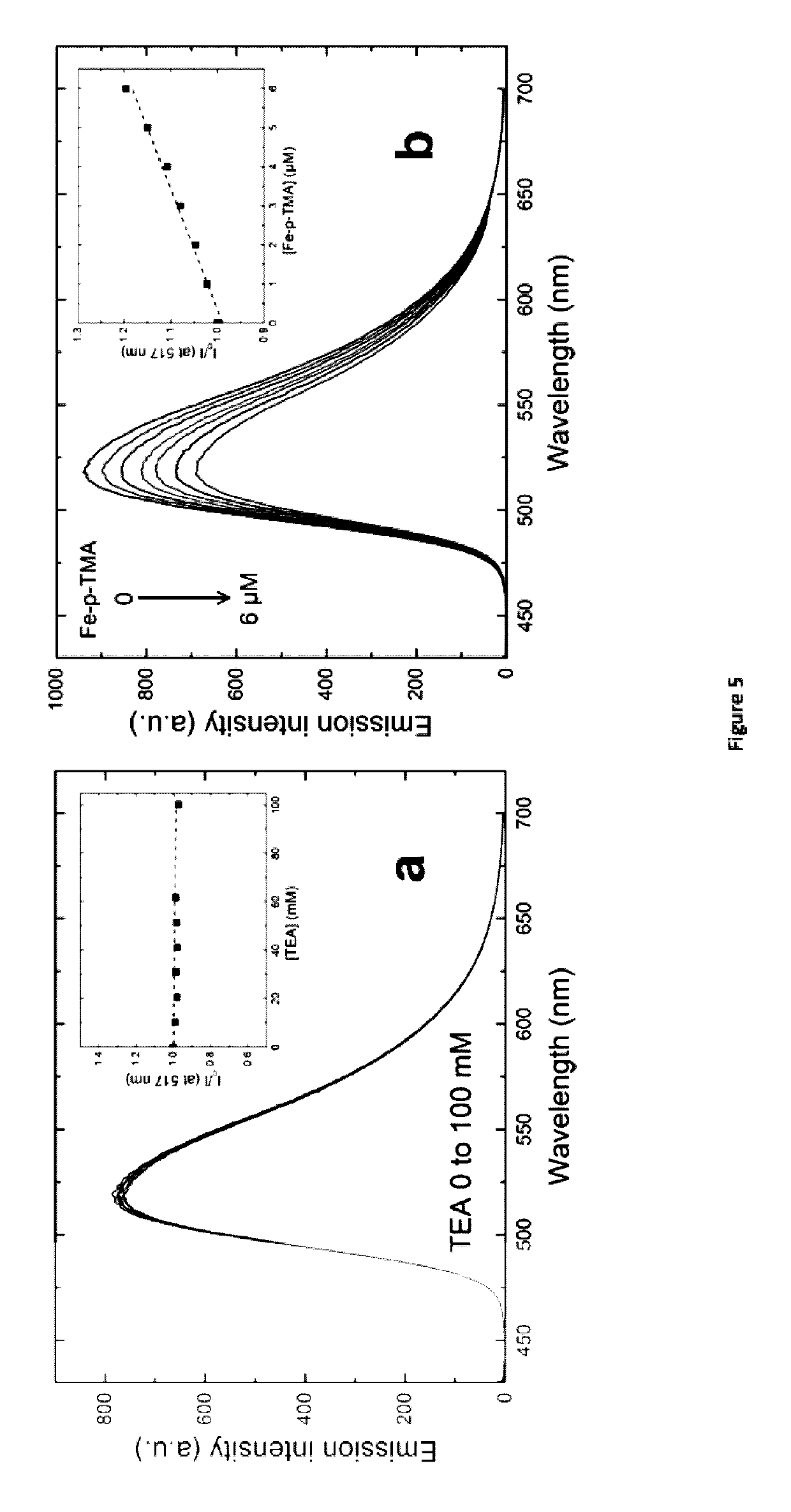Photochemical composition and use thereof for producing ch4 from co2 and/or co
- Summary
- Abstract
- Description
- Claims
- Application Information
AI Technical Summary
Benefits of technology
Problems solved by technology
Method used
Image
Examples
examples
[0153]The following examples are meant for illustrative purposes only, and shall not be construed as limitative in any way.
[0154]Materials and Methods
[0155]Synthesis of Catalysts Chloro Fe-p-TMA, Chloro Fe-o-TMA and Chloro Fe-o-OH.
[0156]The synthesis of chloro iron(III) 5,10,15,20-tetra(4-N,N,N-trimethylanilinium)porphyrin (chloro Fe-p-TMA), chloro iron(III) 5,10,15,20-tetra(2-N,N,N-trimethylanilinium)porphyrin (chloro Fe-o-TMA) and chloro iron(III) 5,10,15,20-tetrakis(2′,6′-dihydroxyphenyl) porphyrin (chloro Fe-o-OH) have been described (see respectively Costentin et al. Proc. Natl. Acad. Sci. U.S.A. 112, 6882-6886 (2015) and Costentin et al. Science 338, 90-94 (2012)).
[0157]Synthesis of Catalysts Chloro Co-p-TMA, Chloro Cu-o-TMA and Chloro Cu-o-OH.
[0158]chloro cobalt(III) 5,10,15,20-tetra(4-N,N,N-trimethylanilinium)porphyrin (chloro Co-p-TMA), chloro copper(II) 5,10,15,20-tetra(2-N,N,N-trimethylanilinium)porphyrin (chloro Cu-o-TMA) and chloro copper(II) 5,10,15,20-tetrakis(2′,6′-d...
PUM
| Property | Measurement | Unit |
|---|---|---|
| Molar density | aaaaa | aaaaa |
| Molar density | aaaaa | aaaaa |
| Molar density | aaaaa | aaaaa |
Abstract
Description
Claims
Application Information
 Login to View More
Login to View More - R&D
- Intellectual Property
- Life Sciences
- Materials
- Tech Scout
- Unparalleled Data Quality
- Higher Quality Content
- 60% Fewer Hallucinations
Browse by: Latest US Patents, China's latest patents, Technical Efficacy Thesaurus, Application Domain, Technology Topic, Popular Technical Reports.
© 2025 PatSnap. All rights reserved.Legal|Privacy policy|Modern Slavery Act Transparency Statement|Sitemap|About US| Contact US: help@patsnap.com



